Keep Your Yard Safe From Hummingbird Predators
Updated: Feb. 27, 2023
If you love attracting hummingbirds, you'll want to keep them safe. Find out which hummingbird predators to watch out for.
Our editors and experts handpick every product we feature. We may earn a commission from your purchases.
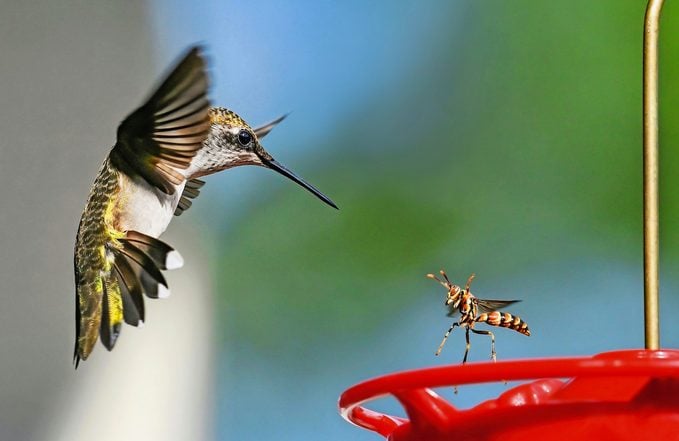
Hummingbirds often return to the same feeders and gardens year after year. If they don’t, you may want to scan your yard for hummingbird predators, and follow these tips for managing them.
Learn how to create an ideal hummingbird habitat.
Can Cats Catch Hummingbirds?
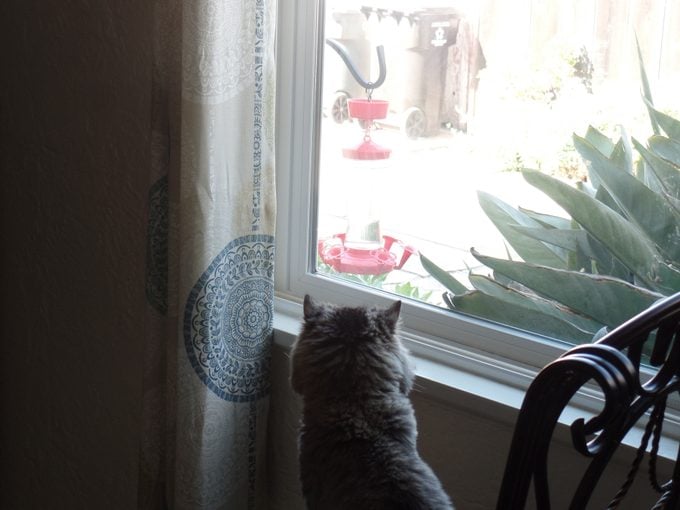
Free-roaming domestic and feral cats are perhaps the most common predators of non-nested hummingbirds, according to The Hummingbird Society, in Sedona, Arizona. Pet cats should be kept indoors. Report feral cats to a rescue organization, the county animal shelter, or a designated no-kill shelter.
To prevent this non-native predator from targeting sugar-water feeders, the group recommends hanging feeders at least 5 feet above the ground and away from fences. Position them so a stalking cat is visible. To keep cats out of your hummingbird flower garden, plant herbs that deter them, such as lavender, lemon thyme and rosemary. Also, plant thorn bushes nearby. Hummingbirds can safely perch in them, and you can spread their trimmings on the ground inside the garden bed.
Learn about monarch butterfly predators and parasites.
Hummingbird Feeder Predators
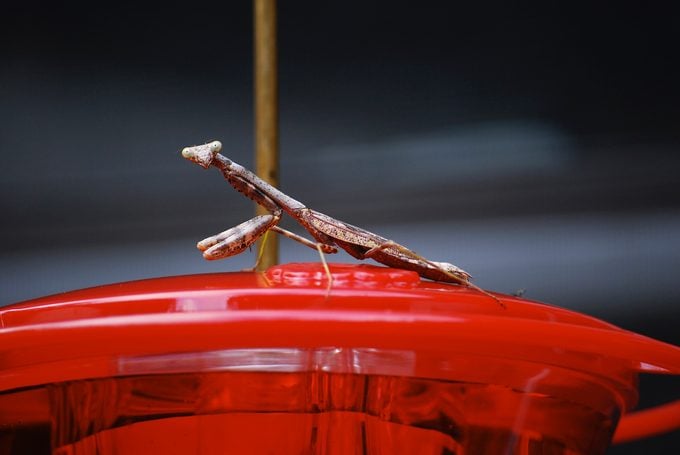
Snakes and praying mantises are known to park themselves on sugar-water feeders and prey on hummingbirds. “A praying mantis will hang on the feeder, grab a hummingbird with its pincers, and suck the juice out of the bird,” says Sandy Lockerman, a federally licensed bird bander who estimates she’s banded some 4,000 hummingbirds in the past 12 years.
She suggests hanging sugar-water feeders away from shrubs and trees where these predators may lurk. If one is on a feeder, remove the predator if possible and relocate the feeder.
Hummingbirds will feed next to a few bees, but too many will intimidate them. While bees rarely attack the birds, wasps, hornets and yellow jackets can become aggressive toward them. If a bird is stung, it would likely succumb to the bite as its size prevents it from absorbing the venom.
Lockerman suggests dish or saucer feeders, which keep the sugar water reachable only by a hummingbird’s long tongue. Some feeders come with built-in bee guards that prevent the insects from feeding. Avoid feeders decorated with plastic yellow flowers as the color attracts wasps.
Learn how to use an ant moat for your hummingbird feeders.
Predators of Nesting Hummingbirds
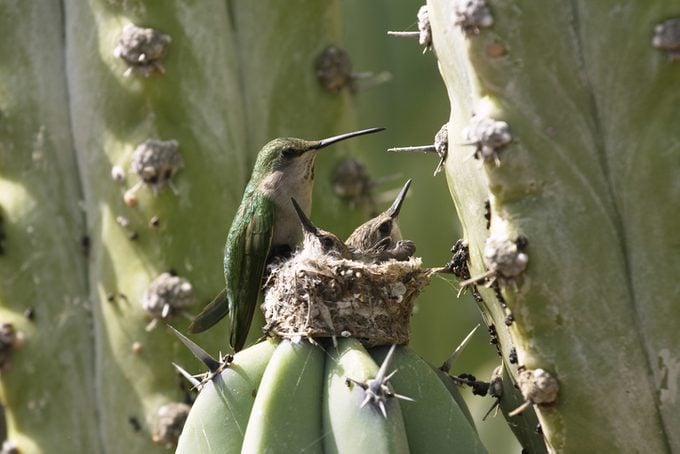
Hummingbird eggs and chicks are easy targets for snakes, lizards, blue jays, crows, ravens, squirrels, chipmunks, and raccoons. While you can’t monitor nests built high in trees, you can provide lower, safer options for hummingbirds to build their nests, such as thorny shrubs, cacti, clotheslines, and garden lights and statues.
It’s believed that most large birds of prey such as red-tailed hawks won’t bother with hummingbirds, and their presence may actually deter hummingbird predators from raiding nests. Small predatory birds, such as sharp-shinned hawks, American kestrels, and merlins may be more likely to target hummingbirds.
Are hummingbirds territorial at feeders and flowers?
Design a Garden to Keep Hummingbirds Safe
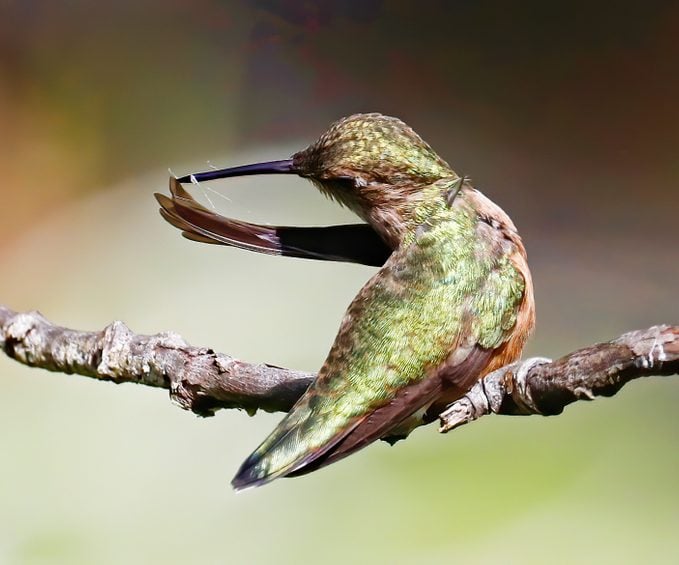
Long, narrow gardens allow hummingbirds to approach flowers from either side while keeping an eye out for predators. Trellis-trained vertical vines and hanging baskets containing nectar flowers keep feeding hummingbirds away from ground predators. Thorny shrubs near the garden provide a safe space.
Hummingbirds will line their nests with soft plant fibers, such as lamb’s ear, the plumes of ornamental grasses, and fuzzy seed heads from clematis and milkweed. They’ll also use spider silk to bind and anchor their nests. If you notice webs in your yard during breeding season, keep an eye out for any entangled hummingbirds, and gently remove them.
Finally, don’t be a predator yourself. Avoid trimming shrubs and small trees during breeding season, or at least carefully check for the birds’ tiny camouflaged nests before doing so.
Other Hummingbird Hazards
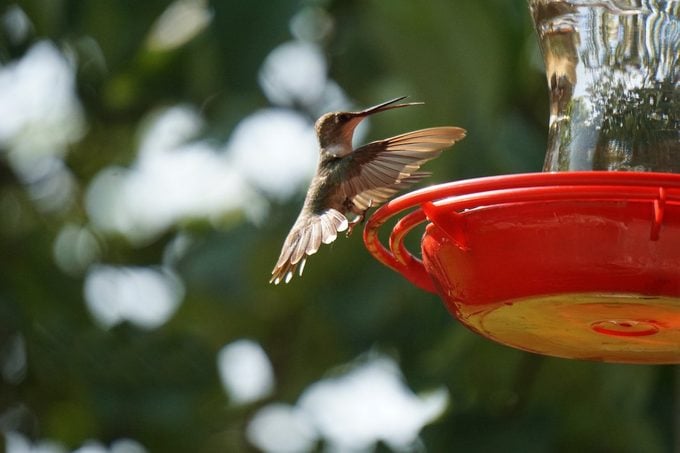
Predators aren’t the only threat to hummingbirds. Pesticides, feeder mold, and commercial mixes containing additives also present hazards. Learn how to clean hummingbird feeders.




















